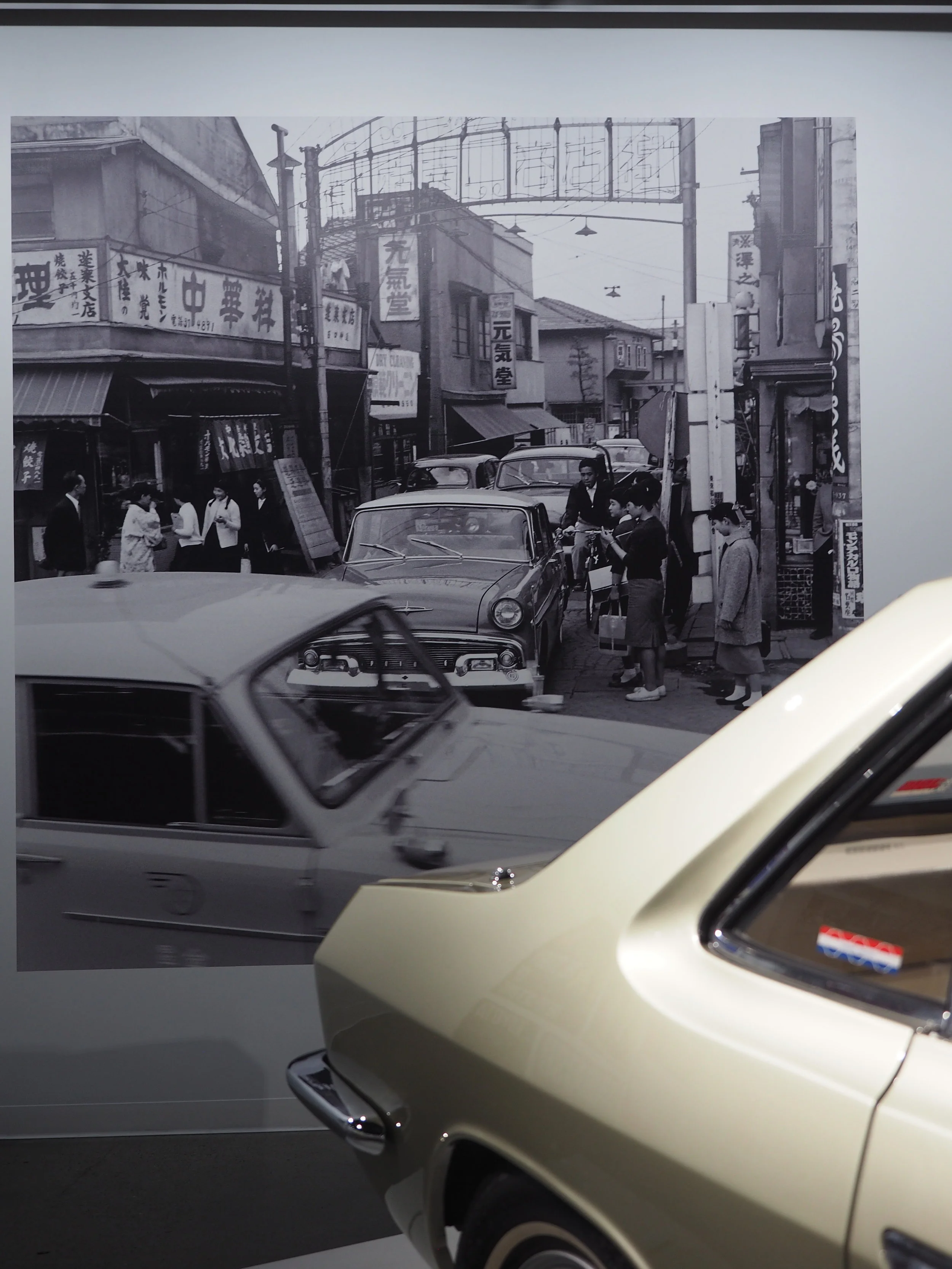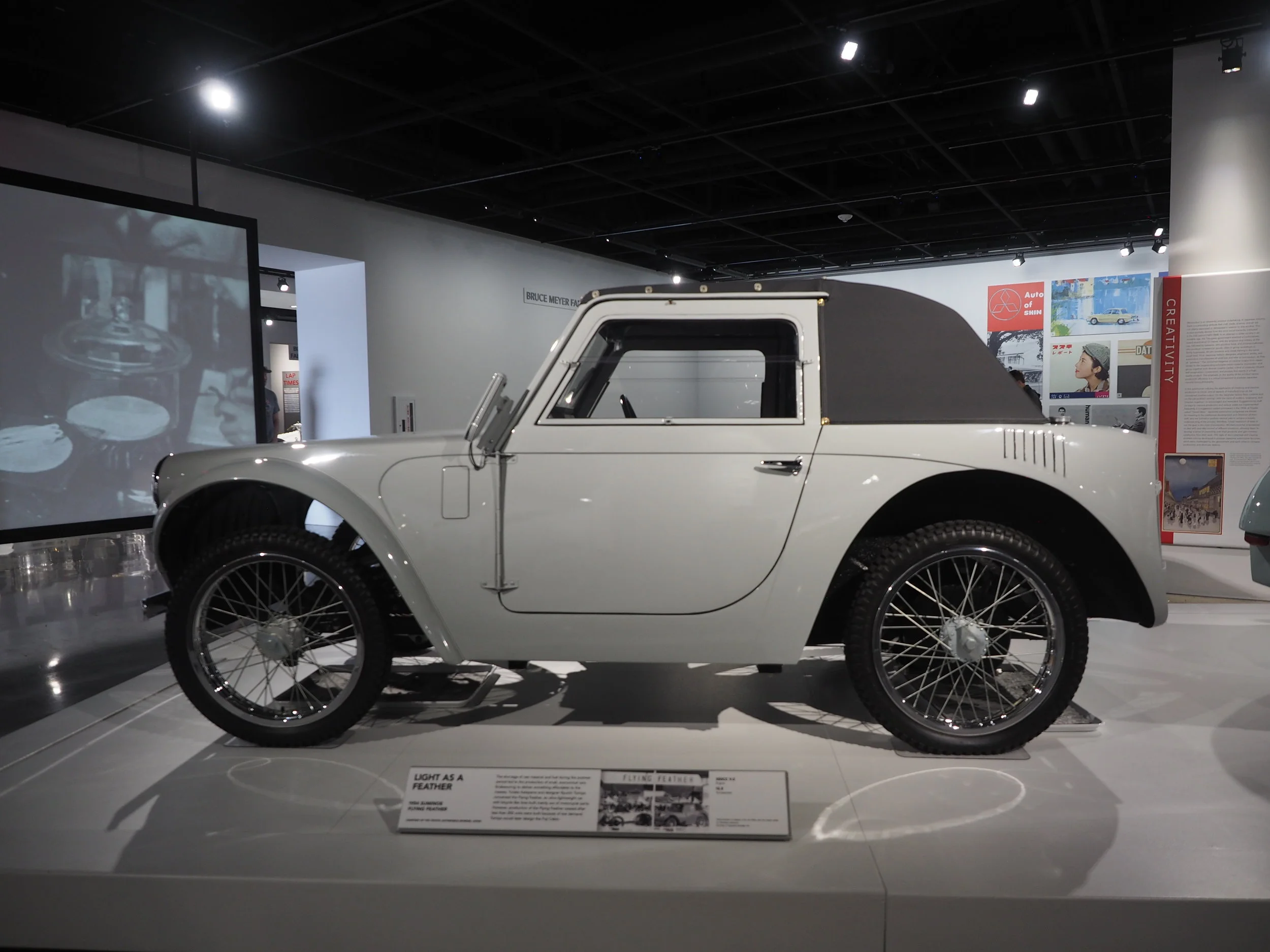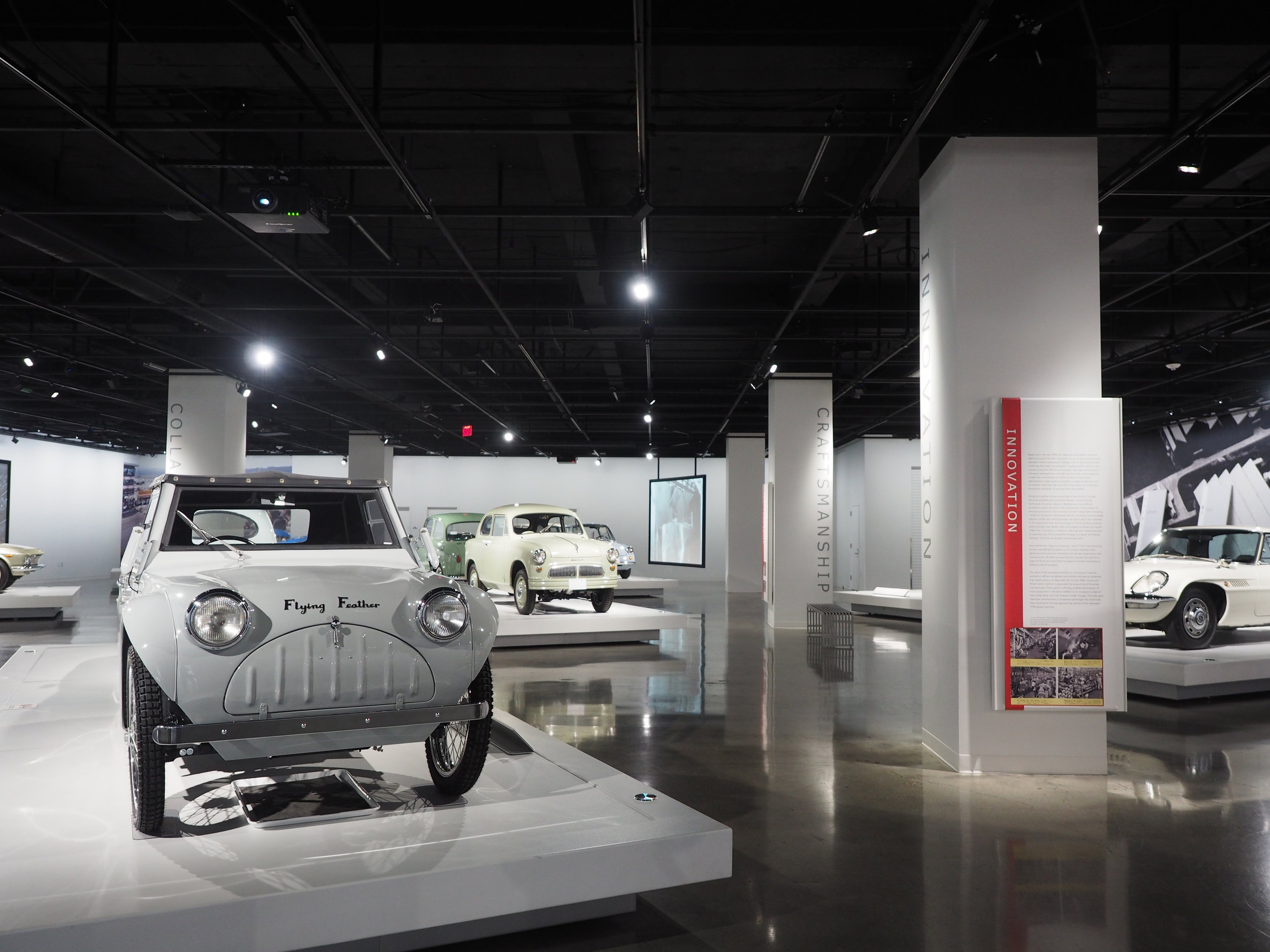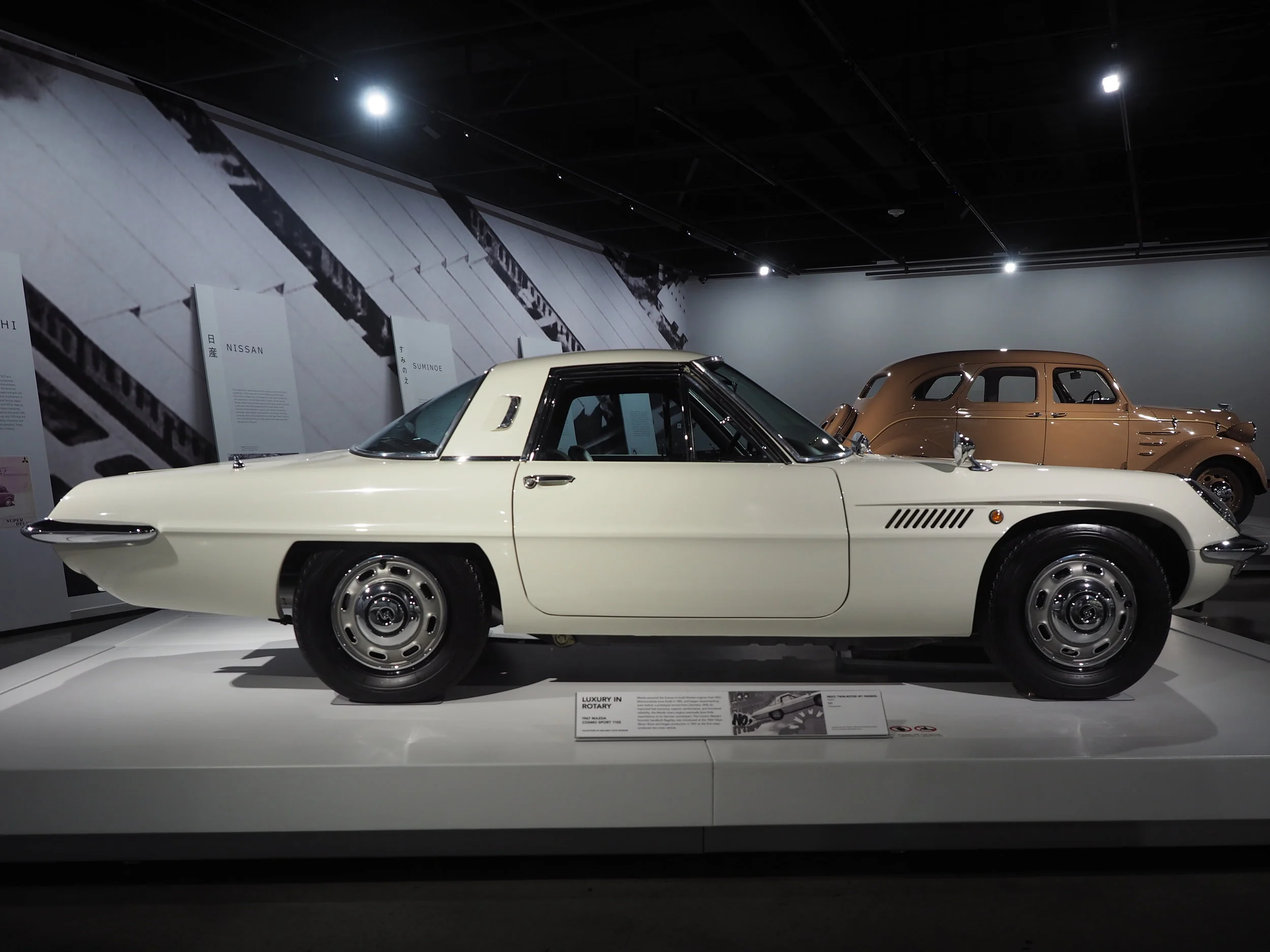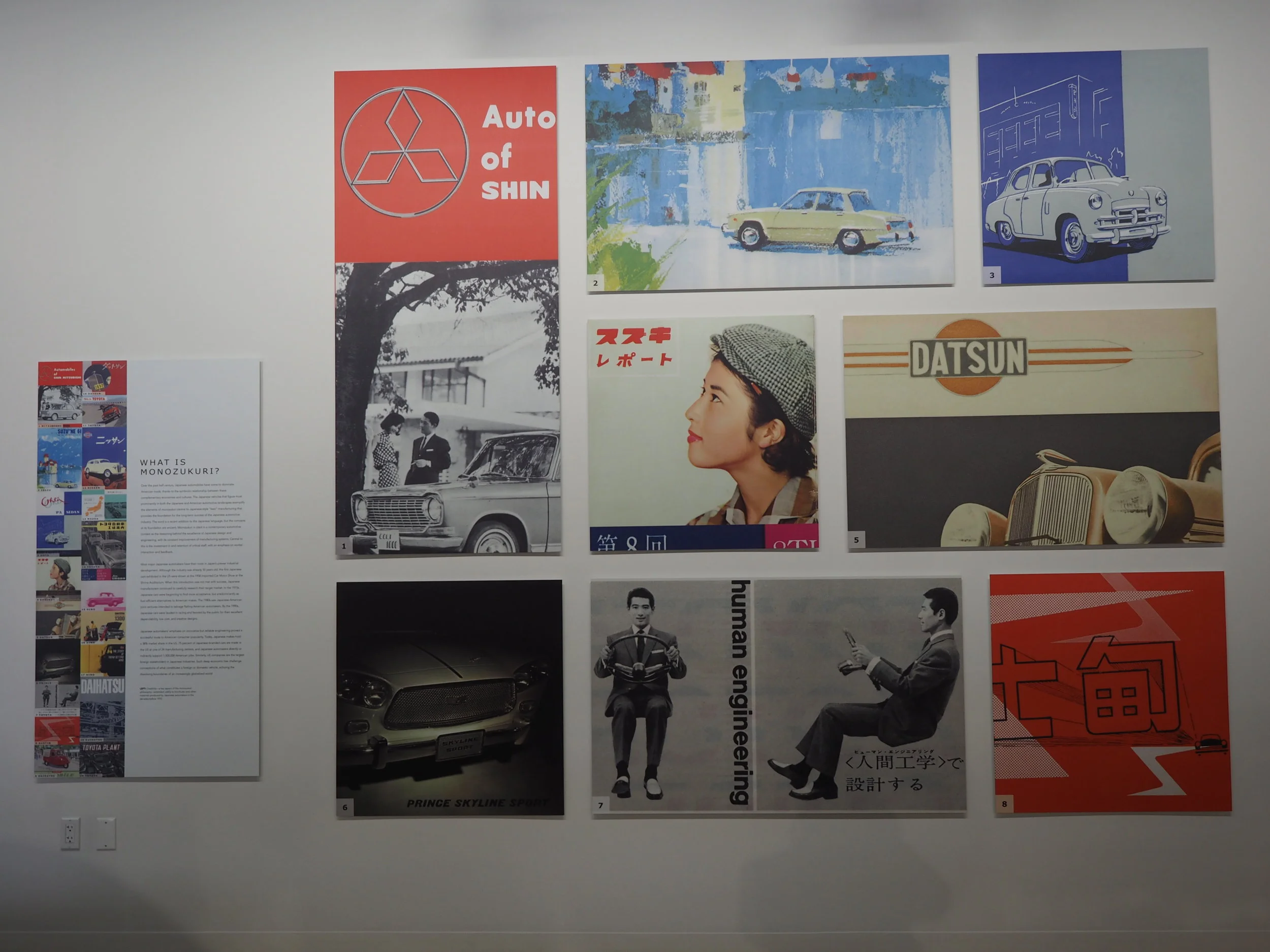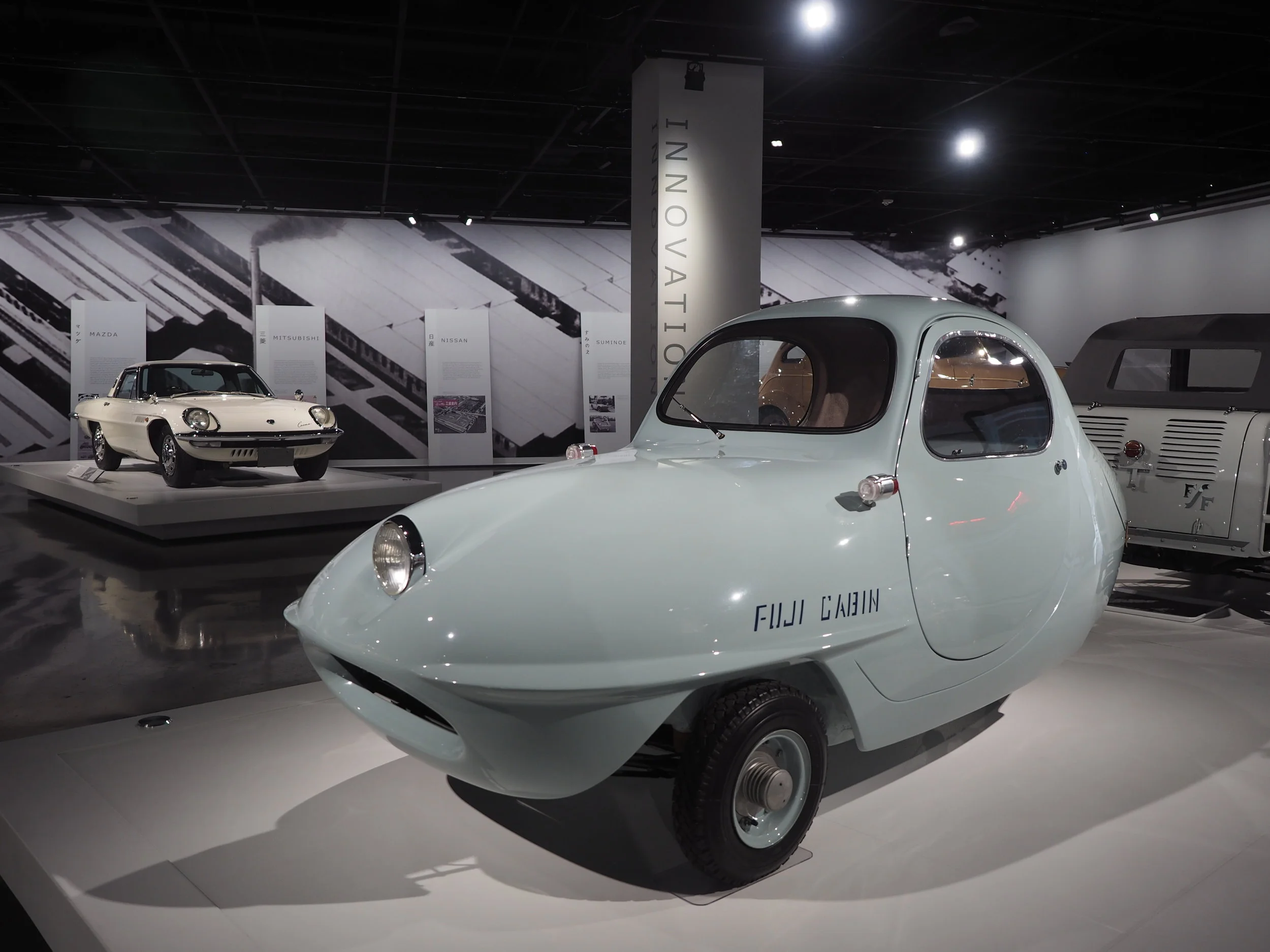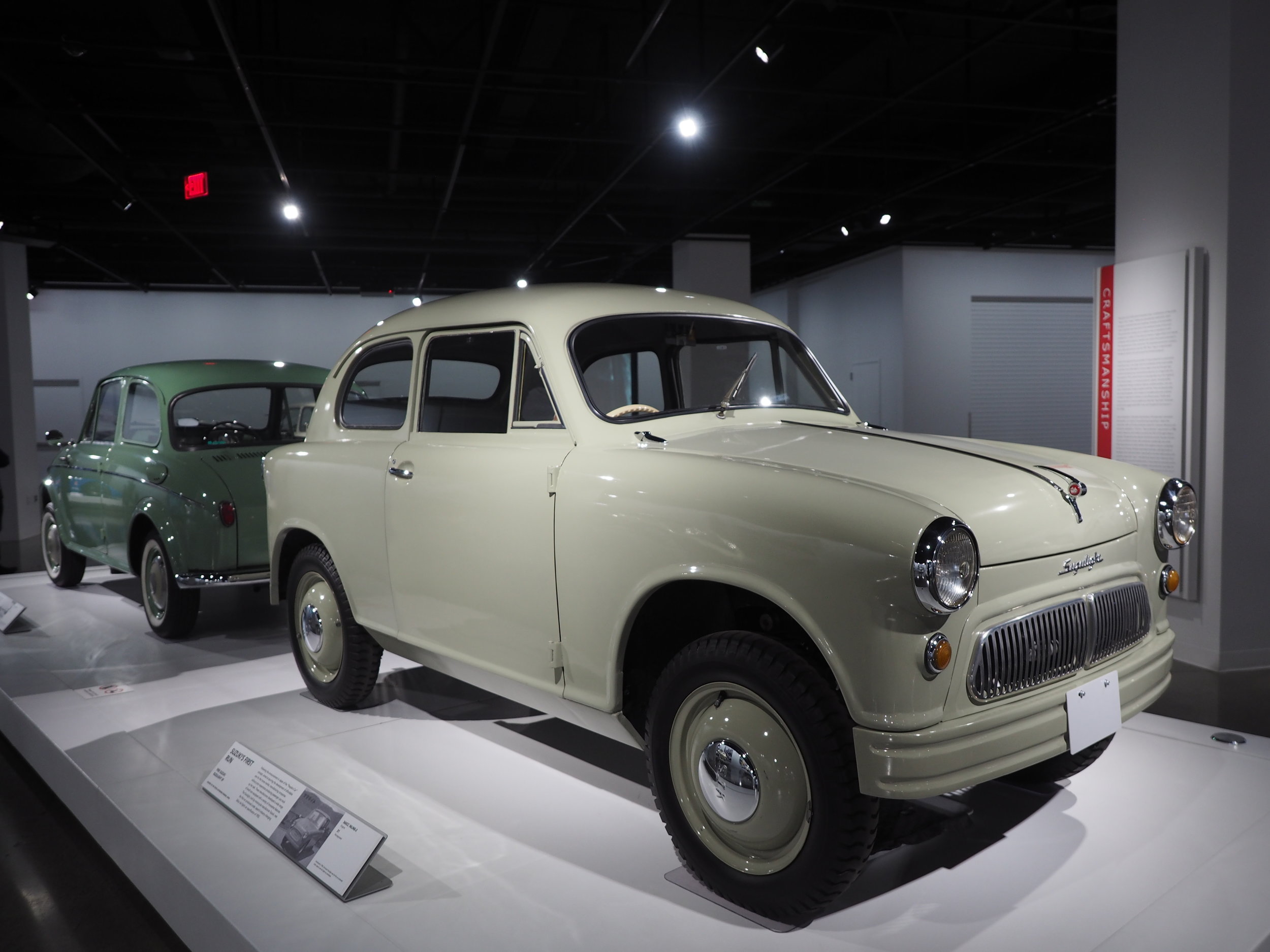Rikumo Field Trip: The Roots of Monozukuri - The Creative Spirit In Japanese Automaking
We recently paid a visit to the Petersen Automotive Museum in Los Angeles, California to see their current exhibition entitled “The Roots of Monozukuri: The Creative Spirit in Japanese Automaking”. The exhibition examines 60 years of automotive ingenuity and features rarely seen car designs from some of Japan’s greatest car manufacturers.
The word “Monozukuri” can be interpreted as “the art, science, and craft of making things” and is used to describe a number of concepts that have influenced Japanese automaking over the last several decades. During the 1970s, it was these concepts that lead Japanese carmakers to challenge the dominance of the US automotive industry and introduce Japanese ingenuity into the driveways of countless Americans (the Toyota Corolla has surpassed the Volkswagen Beetle and the Ford Model T as the world’s number one bestselling production car of all time). This exhibition tells the story of how Japanese cars went from the underpowered joke of the American car enthusiasts to the exciting marvels of manufacturing enjoyed the world over.
The exhibition (debuted in 2018, 60 years following the introduction of the first Japanese car in America) is on view at the Petersen Automotive Museum until February 10th, 2019. We encourage you to visit.
1954 Suminoe Flying Feather - Designed by Yutaka Katayama and Ryuichi Tomiya.
The Suminoe Flying Feather was a lightweight car built mainly out of motorcycle parts with bicycle-like tires and four-wheel independent suspension.
1969 Mazda Cosmo sport 110S - Featured a rotary engine that improved upon (what is now) Audi’s design to become more reliable and fuel efficient.
The exhibit also showcases examples of early Japanese automotive advertising.
1960 Mazda R360 Coupe KRBB - Constructed with advanced lightweight materials (including magnesium alloy) and four wheel independent suspension.
1955 Fuji Cabin Model 5A - A jelly bean-shaped three-wheeler with a scooter motor that was designed by Ryuichi Tomiya.
1955 Suzuki Suzulight SF - The first car made under Japan’s industry-changing 360cc “Kei” (light) car specification of 1955. This model featured a front-engine, front-wheel-drive layout and double wishbone coil-spring suspension.
WORDS BY SAMUEL GEAN
PHOTOS BY KAZ MORIHATA

